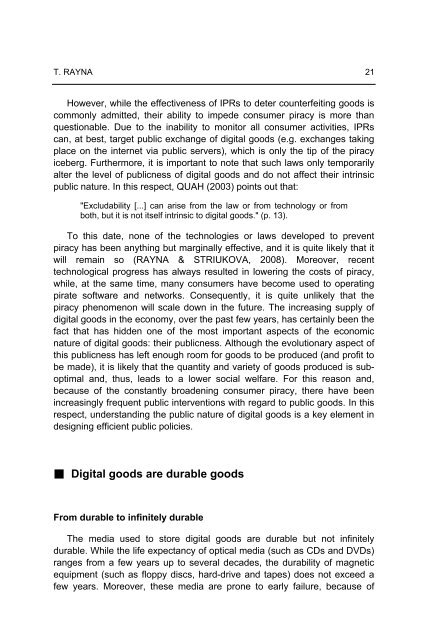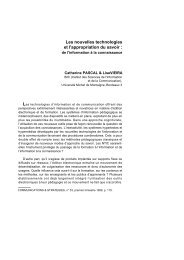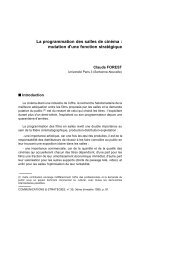The Nature of Digital Goods - Idate
The Nature of Digital Goods - Idate
The Nature of Digital Goods - Idate
You also want an ePaper? Increase the reach of your titles
YUMPU automatically turns print PDFs into web optimized ePapers that Google loves.
T. RAYNA 21<br />
However, while the effectiveness <strong>of</strong> IPRs to deter counterfeiting goods is<br />
commonly admitted, their ability to impede consumer piracy is more than<br />
questionable. Due to the inability to monitor all consumer activities, IPRs<br />
can, at best, target public exchange <strong>of</strong> digital goods (e.g. exchanges taking<br />
place on the internet via public servers), which is only the tip <strong>of</strong> the piracy<br />
iceberg. Furthermore, it is important to note that such laws only temporarily<br />
alter the level <strong>of</strong> publicness <strong>of</strong> digital goods and do not affect their intrinsic<br />
public nature. In this respect, QUAH (2003) points out that:<br />
"Excludability [...] can arise from the law or from technology or from<br />
both, but it is not itself intrinsic to digital goods." (p. 13).<br />
To this date, none <strong>of</strong> the technologies or laws developed to prevent<br />
piracy has been anything but marginally effective, and it is quite likely that it<br />
will remain so (RAYNA & STRIUKOVA, 2008). Moreover, recent<br />
technological progress has always resulted in lowering the costs <strong>of</strong> piracy,<br />
while, at the same time, many consumers have become used to operating<br />
pirate s<strong>of</strong>tware and networks. Consequently, it is quite unlikely that the<br />
piracy phenomenon will scale down in the future. <strong>The</strong> increasing supply <strong>of</strong><br />
digital goods in the economy, over the past few years, has certainly been the<br />
fact that has hidden one <strong>of</strong> the most important aspects <strong>of</strong> the economic<br />
nature <strong>of</strong> digital goods: their publicness. Although the evolutionary aspect <strong>of</strong><br />
this publicness has left enough room for goods to be produced (and pr<strong>of</strong>it to<br />
be made), it is likely that the quantity and variety <strong>of</strong> goods produced is suboptimal<br />
and, thus, leads to a lower social welfare. For this reason and,<br />
because <strong>of</strong> the constantly broadening consumer piracy, there have been<br />
increasingly frequent public interventions with regard to public goods. In this<br />
respect, understanding the public nature <strong>of</strong> digital goods is a key element in<br />
designing efficient public policies.<br />
<strong>Digital</strong> goods are durable goods<br />
From durable to infinitely durable<br />
<strong>The</strong> media used to store digital goods are durable but not infinitely<br />
durable. While the life expectancy <strong>of</strong> optical media (such as CDs and DVDs)<br />
ranges from a few years up to several decades, the durability <strong>of</strong> magnetic<br />
equipment (such as floppy discs, hard-drive and tapes) does not exceed a<br />
few years. Moreover, these media are prone to early failure, because <strong>of</strong>





